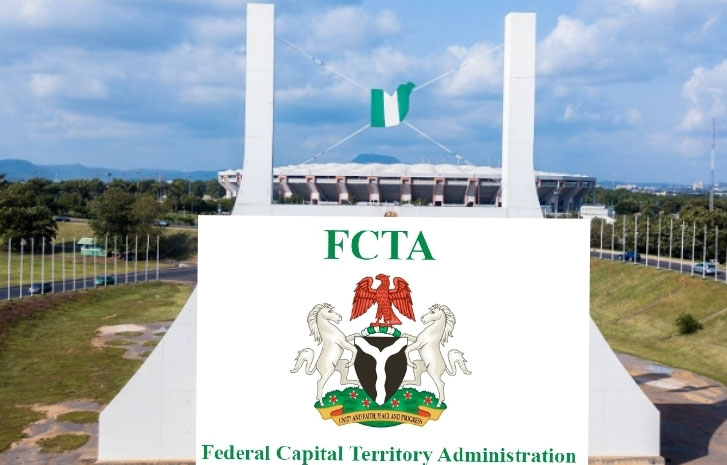Tucked away in the 78-hectare (190-acre) of land in Lekki is the Natural Resource Conservation, Lagos. The centre was established in 1990 to serve as biodiversity conservation centre. The facility was built by the Chevron Corporation for the Nigerian Conservation Foundation (NCF) as a sanctuary for the rich flora and fauna of the Lekki Peninsula. It was also established to protect wildlife and mangrove forests of Nigeria’s Southwest coastline from threat of urban development.
In Cross Rivers State, there is Afi Mountain Wildlife Sanctuary, which covers 104 km2 (40 sq mi). The wildlife sanctuary was founded in 2000 to provide refuge for endangered animal species, including the Cross River gorilla, the Nigeria-Cameroon chimpanzee, the drill and the gray-necked rockfowl.
Aside from these popular sanctuaries, there are many others in the country meant to preserve its rich biodiversity. However, rapid urbanisation has put immense pressure on cities to convert protected areas and natural reserves into real estates.
In 2023, some environmentalists in Ibadan, the capital of Oyo State, protested the state government’s alleged plan to sell part of the forested 58-hectare Agodi Garden and turn it into a residential estate, the Baywood Estate, and also transform the Trans Amusement Park into Parkway Estate.
The facility between Mokola Hill and the state secretariat was created in 1967 as a conservation forest and recreation area. Then, it was called the Agodi Botanical and Zoological Garden — until the animals gradually disappeared.
The Ogunpa Forest Reserve, one of the oldest forest reserves in the country, was established in 1950s as one of the first plantations of indigenous trees spaces in West Africa. From a satellite map of the secretariat through Premier hotel, the Agodi Gardens and its associated forest is the only green area in the city of Ibadan.
The forest is also an important watershed to the Ogunpa River and helps prevent flooding in Ibadan, Oyo State capital. The Guardian learnt that the flooding of 1980 was caused by the massive deforestation exercise on the lower slopes of the Mokola hill to make way for the construction of the Oyo State Cultural Centre, Mokola, Ibadan.
The Oyo State Commissioner for Lands, Housing, and Urban Development, Williams Akin-Funmilayo, defended the move, stating that the forest had become a haven for criminal activities. He said the government’s plan to develop the Baywood Estate would retain 80 per cent of the trees in the area, ensuring environmental preservation while addressing security concerns.
However, The Guardian checks revealed that the Ogunpa Forest Reserve has already been cleared; with trees felled and land graded for construction.
Across Nigeria, rapid urbanisation and population growth have led to the encroachment on and destruction of critical ecosystems, with political elite taking advantage of the situation, shutting down zoos, wildlife parks and conservation centres, and turning them into luxury estates.
On Thursday, November 21, 2024, the University of Ibadan’s Heritage Park and Gardens, a symbol of the institution’s rich history and legacy, was destroyed. The management’s decision to cut down rows of lined up trees at the famous Park has generated a lot of reactions from alumni and students. The collective failure of the management to preserve and protect this cherished heritage site raises serious questions about their commitment to the university’s values and traditions.
Located along Oduduwa road, opposite Queen Elizabeth Hall, this sacred space, developed to commemorate UI’s 60th anniversary, once held immense value and significance. It wasn’t just a place for people to sit and relax; it was an important landmark in the school. This once notable site now stands as a barren shadow of its former self, a clear reminder of what is lost when development usurps sustainability in the minds of people in authority.
Heritage Park was a sanctuary of serenity that embodied the perfect blend of beauty and utility. The towering trees provided shade for picnics, a cool spot for lovers, fresh air for relaxation, an atmosphere for ideation, and a picturesque aesthetic that made it a favoured spot for students. “It was a symbol of the school’s connection to nature, culture, and history, a living archive of countless moments of joy, reflection, and memories,” a 300 level student of forestry said.
Already, the University of Ibadan is set to construct a new Senate Building at the Heritage Park.
Before the University of Ibadan tree destruction spree, Enugu State had led in the anti-conservation effort, as its most expensive estate used to be a zoo with rainforests.
Located in the heart of the Coal city, as Enugu is fondly called, the zoological garden was 1.72 miles away from the Government House and right behind the Old Governor’s Lodge.
It used to be one of the green areas in the state capital. Following the zoo’s closure, the land was transformed into an upscale estate.
After the winding up of the Enugu zoo, the Imo State Zoological Garden and Wildlife Park followed.
The zoo, founded in 1976, was nestled in a 23-hectare reserved rainforest along the old road leading to the historic Nekede community in Owerri West Council of Imo State. The gazetted rainforest accommodated different species of animals and over 20,000 species of plants, many of which are endangered.
Aside from the Enugu and Imo zoos, other wildlife and nature parks across the country are battling these crises: Urban expansion and infrastructure development are posing challenge conservation activities. Some states argue in favour of land conversions, noting that urban development is essential.
Nigeria’s housing sector is in crisis, with an alarming shortage of affordable homes pushing millions of desperate citizens into slums and informal settlements. The acute deficit has worsened poverty, deepened inequality, and left a significant portion of the population without basic shelter. This problem, which is acutely pronounced in the cities, has reached a critical stage where urgent intervention is needed to address the causes and provide lasting solutions.
National statistics show that the country faces a housing deficit of approximately 28 million units, with experts predicting a need for 700,000 new homes yearly. With the growing urbanisation, these deficits are most pronounced in the major cities, where access to affordable homes becomes increasingly limited, pushing the poor into slums and informal settlements.
The World Bank says Nigeria’s urban population is expected to grow by over 200 million by 2050. This is a potential social crisis. The NBS and IMF agree that the lack of affordable housing options has led to the proliferation of slums, particularly in urban centres.
Housing deficits, particularly, in major cities like Lagos, Abuja, and Port Harcourt have led state governments to prioritise real estate over conservation. However, environmentalists have warned that the long-term consequences far outweigh these short-term gains.
They say the destruction of forests, wetlands and other green spaces raises critical questions about the long term environmental and social costs.
Director-General of the Nigerian Conservation Foundation (NCF), Joseph Onoja, said environmental consequences of converting conservation centres into housing estates are enormous and pose risks to Nigeria’s biodiversity and overall environmental health.
Onoja said this trend could lead to the loss of vital habitats for wildlife, adding that areas like Lekki axis, where unplanned development has trapped small forest reserves, displacing wildlife such as monkeys.
He also cautioned that clearing of these reserves could expose humans to diseases previously confined to animal populations.
 “When these areas are cleared, the trees are removed and animals lose their homes. These places also act as noise reduction zones, when cleared; it exacerbates urban heat, leading to higher temperatures in cities. The absence of forests increases the heat index and causes erosion and flooding, as forests play a crucial role in water absorption. They act as natural barriers during rainfall showing water’s descent and preventing floods.
“When these areas are cleared, the trees are removed and animals lose their homes. These places also act as noise reduction zones, when cleared; it exacerbates urban heat, leading to higher temperatures in cities. The absence of forests increases the heat index and causes erosion and flooding, as forests play a crucial role in water absorption. They act as natural barriers during rainfall showing water’s descent and preventing floods.
“When wildlife natural habitat is destroyed, these animals wander into urban areas, sometimes, even raiding people’s homes. This is not a rare occurrence, as seen with the recent challenges around the Lekki Conservation Centre.
“When we encroach on wildlife habitats, we expose ourselves to diseases that would otherwise not cross over to humans. This is evident to diseases like Ebola and Covid-19, which are believed to have originated from such cross species transmissions.”
Addressing the root causes of these environmental threats, he cited greed and ignorance as major drivers of such practices.
“People view the standing trees as a waste of space and are motivated by financial gain, wanting to sell land for housing developments. However, they fail to realise that the cost of such development comes at the expense of our health and economy. Clearing trees that regulate temperature forces people to rely more on air conditioning, leading to higher energy costs,” he explained.
Onoja stressed that the foundation’s goal is to promote a balanced approach that allows for both progress and environmental preservation.
“At the Nigerian Conservation Foundation, we advocate for a more harmonious relationship between urban development and nature. Our Green Recovery Nigeria programme aims to restore Nigeria’s forest cover to at least 25 per cent of the land area, as recommended by the FAO.
This is essential for ensuring a sustainable environment for future generations, while the NCF does not oppose development, it should be done with an understanding of its environmental impact.
“Development must be planned with the environment in mind. Failing to do so will lead to disastrous consequences, as evidenced by the flooding in Lekki in 2017. Areas that had been sand-filled, and wetlands destroyed, faced severe property damage when water levels rose.”
To mitigate these risks, he called for environmentally sustainable building designs that do not require the destruction of natural resources.
He also pointed to existing laws in Lagos that mandate green spaces in new developments but questioned their enforcement. “There is a law in Lagos requiring that every land purchase should be accompanied by green space, but how much of that law is being implemented? That’s the advocacy we are pushing for.”
Statistics show that Nigeria has one of the highest rates of deforestation in the world. According to Global Forest Watch, the country lost approximately 207,000 hectares of natural forest in 2020 alone, emitting 118 million metric tons of CO₂ in the process.
Despite previous pledges to increase forest cover, urbanisation, agriculture, and illegal logging continue to take a toll on Nigeria’s green landscape.
The minister emphasised the country’s commitment to biodiversity conservation and climate change mitigation, yet government actions at various levels tell a different story.
Only last year, the Federal Government launched an ambitious tree-planting campaign to restore, at least, 25 per cent of the country’s degraded forests.
The initiative, announced by the Minister of State for Environment, Dr. Iziaq Salako, during a tree-planting event at the University of Abuja, aimed to plant six million trees.
At first glance, this appears to be a strong statement in favour of environmental conservation. However, a closer look at recent trends revealed a troubling contradiction, while government is championing afforestation; state authorities across the country are converting conservation centres and green spaces into luxury housing estates.
Also last year, Polaris Bank launched a tree-planting initiative in Ogun State as one vital way to fight the effects of climate change and enhance the sustainability of the environment.
At the exercise at Tai Solarin University of Education, Ijagun, near Ijebu-Ode, Ogun State, the Executive Director of Polaris Bank, Chris Ofikulu, identified forest regeneration as key to tackling climate change impact.
Ofikulu said, “this initiative is to commemorate the World Environment Day in June 2024. This year’s theme focuses on ‘Land Restoration, Desertification, and Drought Resilience,’ which aligns with the United Nations Decade of Ecosystem Restoration (2021-2030).
“In support of this, Polaris Bank has committed to sustainable practices and land restoration by planting trees nationwide in regions affected by erosion, such as Ogun. It is noteworthy to mention that we are commencing this initiative with Ogun State. At Polaris Bank, sustainability is not just a catchphrase. It is our ethos. It is a journey in which we are committed to walk in with conviction.”
He added, “Our sustainability practices involve promoting responsible banking, empowering people and society, addressing environmental issues, and sustainable economic growth. We aim to ensure that every decision we make, from investments to operations, is guided by the Environmental, Social, and Governance principles.”
In his address at the occasion, the Senior Manager of Partnerships, NCF, Ayodele Alamu, said the essence of the initiative was to achieve afforestation and restore the forest cover in Nigeria.
Alamu said, “Today, deforestation is a big challenge such that our forest cover which used to be 30 per cent years back is now between 6 to 8 per cent and the consequences of this are land degradation, and erosion, among others.”
Also, last year, in a bold move to combat land degradation and climate change, the Agro-Climatic Resilience in Semi-Arid Landscapes (ACReSAL), in collaboration with the Kogi State government, embarked on an aggressive tree planting campaign at the Federal University Lokoja (FUL). The initiative aimed to plant 9,000 tree seedlings.
ACReSAL, a World Bank-assisted project, is tackling environmental challenges in Northern Nigeria on multiple fronts. The project, which covers 19 Northern States and the Federal Capital Territory, is a collaborative effort involving the Federal Ministries of Environment, Water Resources, and Agriculture and Rural Development.
Speaking on the issue, an environmental policy analyst, Bayo Odebiyi warned that tree-planting campaigns alone will not reverse the environmental damage caused by deforestation.
Former President of the Nigerian Environmental Society (NES), Dr. Dorothy Bassey, lamented over the increasing destruction of conservation areas across the country, warning of both immediate and long-term environmental consequences adding that such destruction could be irreversible, further amplifying the consequences of current actions.
Dr. Bassey told The Guardian that the short-term losses from clearing conservation areas go beyond just environmental degradation; they translate into lost revenue for local communities who directly benefit from the sustainable management of these areas.
She pointed out that conservation hubs are vital to preventing species extinction, as they preserve rare and endangered species that are crucial to maintaining biodiversity.
“This act of destroying established conservation areas should be classed as criminal, not only does it deprive people of valuable resources, but it robs future generations of the opportunity to benefit from the environmental services these areas provide.”
She further noted that the ongoing destruction reflects a “lack of regard to nature that sustains humanity,” adding that the delicate balance between man and nature is essential for the survival of both.
According to her, local communities should have been actively resisting the destruction of these areas, yet there remains a significant knowledge gap.
“There is no awareness at the grassroots level because people don’t understand the role nature plays in sustaining life,” she said.
Bassey also criticised the lack of effective communication on environmental issues at the local and national levels.
She lamented that, despite the country’s top ranking in signing international environmental treaties and agreements, there is no visible effort to educate the population on the importance of conservation.
“Are there billboards talking about environmental issues? Are there TV ads or public campaigns? No! Instead, we see entertainment shows like BB Naija dominating the media,” she said.
She emphasised that with more effective public awareness campaigns, a concerted effort to preserve conservation areas could be made. “Until there are proper understanding and awareness at all levels of society, unfortunately, the trend of destroying conservation areas will continue,” she warned.
She, however, called for the urgency of sustainable development practices in Nigeria and the need for a shift towards more informed, environmentally conscious policies and practices.
Similarly, Environmental management expert, Dr. Michael Terungwa David, speaking on the dangers of uncontrolled land conversion, emphasised that the destruction of wetlands, forests, and other conservation areas disrupts vital ecosystem services.
“These areas provide essential benefits such as water filtration, air purification, and flood control. Additionally, they act as natural buffers against extreme weather events, making their destruction a direct threat to communities’ resilience against climate change.
“Clearing land for construction results in soil erosion, reduced carbon sequestration, and increased desertification, this further destroys biodiversity and creates an imbalance within the ecosystem because once a conservation area is developed, and it is difficult or even impossible to restore it to its original state.”
Michael called for sustainable urban planning, strict environmental impact assessments, and rigorous monitoring to curb the destruction of conservation areas.
He also urged Nigerians to recognise the environment as a critical factor in human survival. “The environment is life. When you destroy the environment, it will destroy you.”
Legal and Policy Framework
Nigeria has several environmental protection laws, including the National Environmental Standards and Regulations Enforcement Agency (NESREA) Act and the Endangered Species Act. However, weak enforcement and corruption have rendered these policies largely ineffective.
The Environmental Impact Assessment (EIA) Act mandates that all major development projects undergo environmental scrutiny before approval. Yet, many state governments bypass this requirement, prioritising economic gain over environmental sustainability.
Experts noted that stricter enforcement of environmental laws, sustainable urban planning, and increased investment in reforestation projects are crucial to addressing the crisis.
An architect and permaculture designer, Folasiji Bomi-Daniels, emphasised the need to prevent conservation centres from being converted for other uses, warning of long-term environmental consequences.
“Sustainable design solutions should prioritise sustainability, earth-care, and people-care. This would be my first recommendation. Other design solutions would include Green Design and Biomimicry.”
He also suggested that Nigeria should rethink how it integrates green spaces into urban developments.
“I recommend food trees as shade trees, foodscapes over landscapes, herbs over shrubs, and agronomists over gardeners. With this approach, people will be more inclined to preserve green spaces as they become valuable both to passersby and residents.”
Bomi-Daniels also highlighted flaws in traditional urban planning, which often applies rigid grid systems that neglect natural land formations.
“Responsive, responsible, and total design, as advocated by Permaculture, should be implemented from the inception of projects to prevent these challenges,” he urged.
He further stressed the need for stronger law enforcement to protect conservation centers, noting that Nigeria’s existing environmental regulations are adequate but poorly implemented.
“One enforced law is stronger than a thousand sitting on the bookshelf,”he remarked.
To ensure responsible development, he recommended conducting Environmental Impact Assessments (EIA) and obtaining technical reports from syndicated professionals before approving large-scale projects.
On his part, an architect, Samuel Olabisi suggested that various design strategies could help reduce environmental disruption while accommodating urban growth.
“There are several design solutions to minimise environmental disruption, such as green building practices, adaptive reuse, and the creation of urban green spaces,” Olabisi said.
He explained that rather than cutting down trees or wiping out natural habitats, housing developments could be planned in ways that preserve some of these elements.
“The most effective way to integrate green spaces in estates is to build around them instead of removing them. We can also incorporate plants and water bodies at the design stage, ensuring that the estate coexists with nature rather than replacing it.”
Using global examples, Olabisi noted that bridges and housing developments near water bodies provide models of how construction could respect the natural environment.
“A common example is seen in the bridges built across water bodies. We use embankments, appropriate foundation types, and specific materials to ensure that these structures fit into the environment rather than disrupt it,” he explained.
He emphasised that a structured approach must be taken to balance urban expansion with conservation.
“In my opinion, all species should be protected. If any species goes extinct, it affects ecological balance even in small ways and over time, this will negatively impact the environment and human survival,” he warned.









